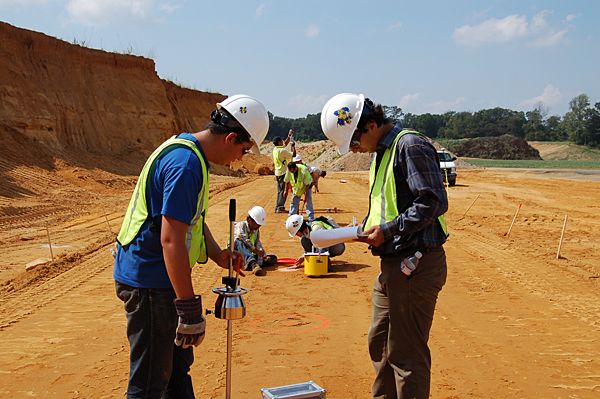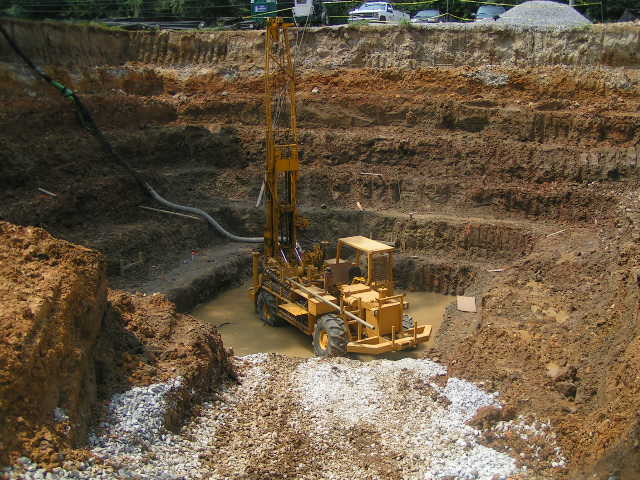Exactly How Consulting Engineers Enhance Geotechnical Engineering Projects: Insights Into Their Expertise, Techniques, and Collaborative Approaches
Consulting engineers are crucial in enhancing geotechnical engineering projects, applying their specialized understanding to navigate the intricacies of subsurface conditions. Their techniques encompass a variety of website examination strategies, including Requirement Penetration Tests (SPT) and Cone Infiltration Examinations (CPT), which notify crucial choices throughout the design and building and construction stages. Their joint approaches foster communication among varied task stakeholders, ultimately forming the job's trajectory. As we check out the multifaceted duties these specialists play, it ends up being clear that their contributions extend past technical expertise, prompting a closer consider the effects for job success.
Function of Consulting Engineers
The know-how of seeking advice from designers in geotechnical engineering is fundamental to the successful implementation of construction jobs. These professionals play a crucial role in analyzing soil and rock buildings, which are critical variables influencing layout and construction decisions. By conducting comprehensive website investigations, speaking with designers gather vital information that notifies the design process, guaranteeing jobs are constructed on secure and appropriate ground.
Consulting designers likewise offer invaluable insights right into risk management (geotechnical geologist). They determine possible geotechnical hazards, such as landslides, dirt liquefaction, and settlement problems, making it possible for stakeholders to carry out effective reduction strategies. Their knowledge help in maximizing foundation layouts, which can bring about significant cost savings and boosted safety
Additionally, seeking advice from designers serve as an essential web link in between project owners, designers, and specialists. Their ability to convert intricate geotechnical information into workable recommendations cultivates cooperation and facilitates educated decision-making throughout the task lifecycle. This multidisciplinary technique not only boosts job efficiency but likewise ensures conformity with governing requirements and ideal techniques.
Trick Methods in Geotechnical Engineering

One main technique is site examination, which involves carrying out field examinations and laboratory analyses to gather data on subsurface conditions. Methods such as Standard Infiltration Testing (SPT) and Cone Penetration Testing (CPT) are commonly made use of to assess soil stratigraphy and toughness. Additionally, geophysical approaches, including seismic and electric resistivity surveys, offer non-invasive ways to assess subsurface features.
One more important methodology is numerical modeling, which makes it possible for engineers to replicate different scenarios and anticipate how soil-structure communications will behave under various loading conditions. Limited Component Analysis (FEA) is a typical strategy employed in this context.
In addition, the layout of structures, retaining frameworks, and earthworks relies greatly on these approaches - geotechnical geologist. By integrating sophisticated logical tools with area information, speaking with designers can develop customized services that deal with specific task obstacles, eventually adding to the stability and safety of building and construction jobs
Value of Soil Analysis
Dirt analysis offers as a fundamental component in geotechnical design, offering important insights into the physical and chemical properties Recommended Reading of dirt necessary for efficient construction planning. Comprehending dirt features is essential for establishing its load-bearing capability, drain habits, and possibility for settlement or instability. Comprehensive dirt investigations, consisting of sampling and laboratory testing, help identify criteria such as soil kind, moisture web content, thickness, and shear strength.
These evaluations notify the choice of proper construction techniques and materials, ultimately affecting task safety and security and longevity. For circumstances, cohesive dirts might call for different foundation layouts compared to granular soils, demanding customized design remedies. Soil analysis help in recognizing pollutants that can posture dangers to human health or the setting, allowing for the advancement of reduction methods.
Integrating dirt analysis right into the early phases of job growth assists to minimize unpredicted obstacles, making certain that engineers can prepare for and address possible issues prior to they intensify. By developing an extensive understanding of the site problems, speaking with designers can maximize style effectiveness and decrease expenses, thus boosting the total success of geotechnical design projects.
Collective Approaches in Tasks
Successful geotechnical projects often pivot on collaborative approaches that unite varied knowledge from different self-controls. Reliable collaboration among consulting engineers, geologists, environmental researchers, and building specialists is essential for attending to intricate difficulties and enhancing project outcomes. By leveraging the distinct skills and expertise of each staff member, tasks can gain from a holistic understanding of the website conditions, regulatory requirements, and design restrictions.
Regular interaction and interdisciplinary conferences assist in the sharing of insights and cultivate a society of team effort. These collaborative efforts enable the identification of prospective risks early in the project lifecycle, allowing for prompt reduction techniques. Including comments from stakeholders, consisting of local areas and regulatory agencies, guarantees that all point of views are taken into consideration, boosting task approval and compliance.
Additionally, the assimilation of advanced innovations, such as Geographic Information Solution (GIS) and Building Info Modeling (BIM), more enhances cooperation. These tools enable the real-time sharing of data and visualization of geotechnical problems, advertising notified decision-making. Inevitably, a collaborative strategy not just simplifies project execution yet additionally lays the structure for innovative options to complicated geotechnical design obstacles.
Influence on Task End Results

Consulting engineers use advanced techniques such as risk assessment and anticipating modeling, which enhance the precision of task projections. Their capability to incorporate ingenious technologies, like geotechnical instrumentation and information analytics, even more refines the design and building procedures. Because of this, tasks experience improved efficiency, minimized prices, and lessened hold-ups.
Additionally, fostering efficient interaction visit this web-site and partnership among staff member boosts problem-solving capacities. When difficulties develop, an unified front enables swift recognition of services, preventing prospective obstacles. Eventually, the joint efforts of seeking advice from designers contribute to greater top quality end results, ensuring that tasks fulfill both regulative standards and customer expectations.
Conclusion

Comments on “Experienced Geotechnical Geologist for In-Depth Ground Investigations”